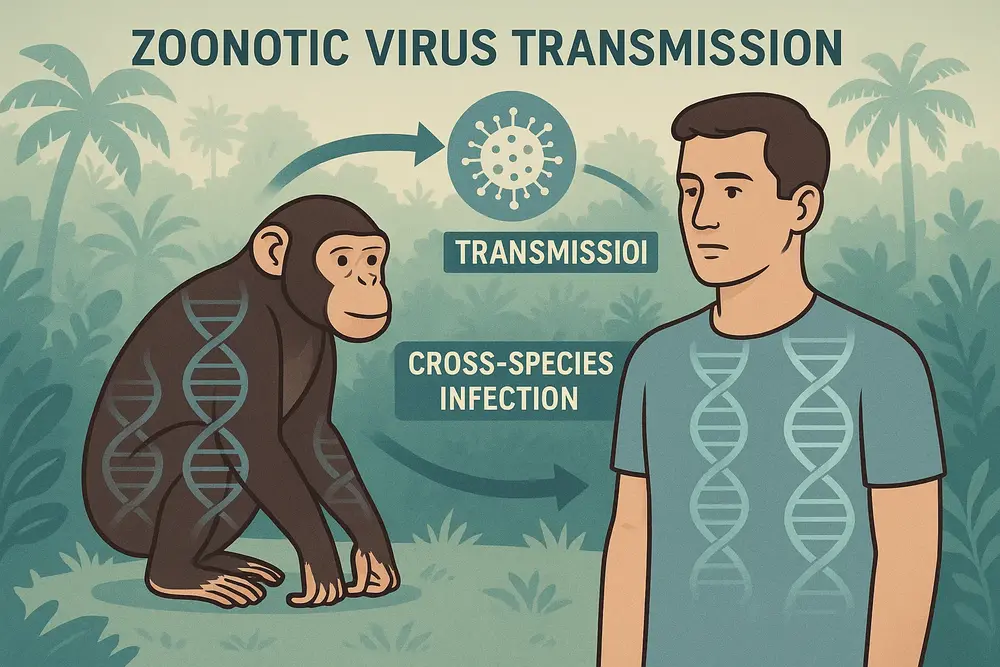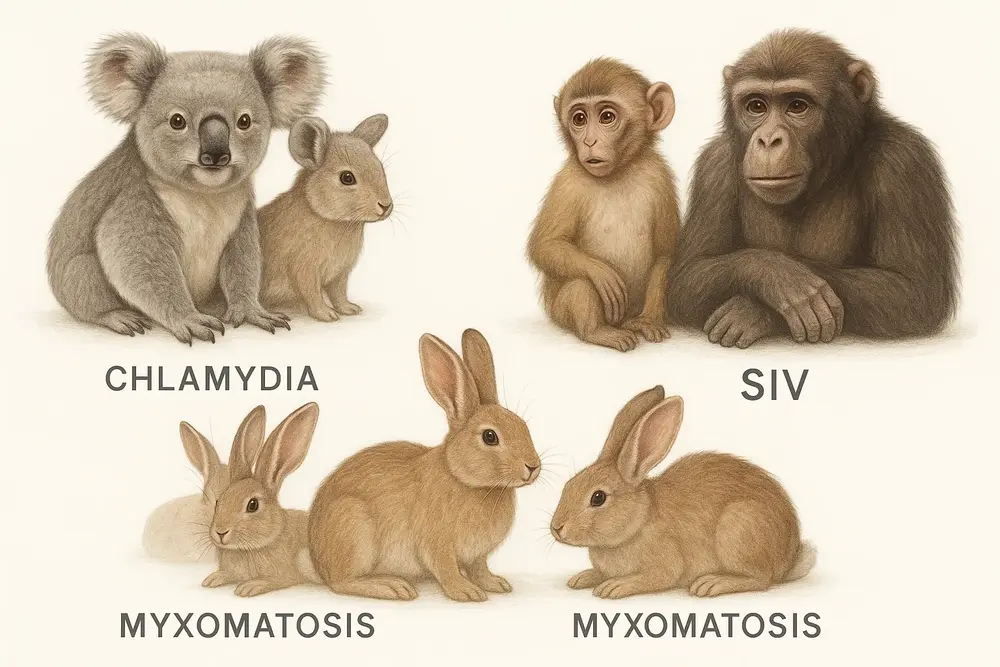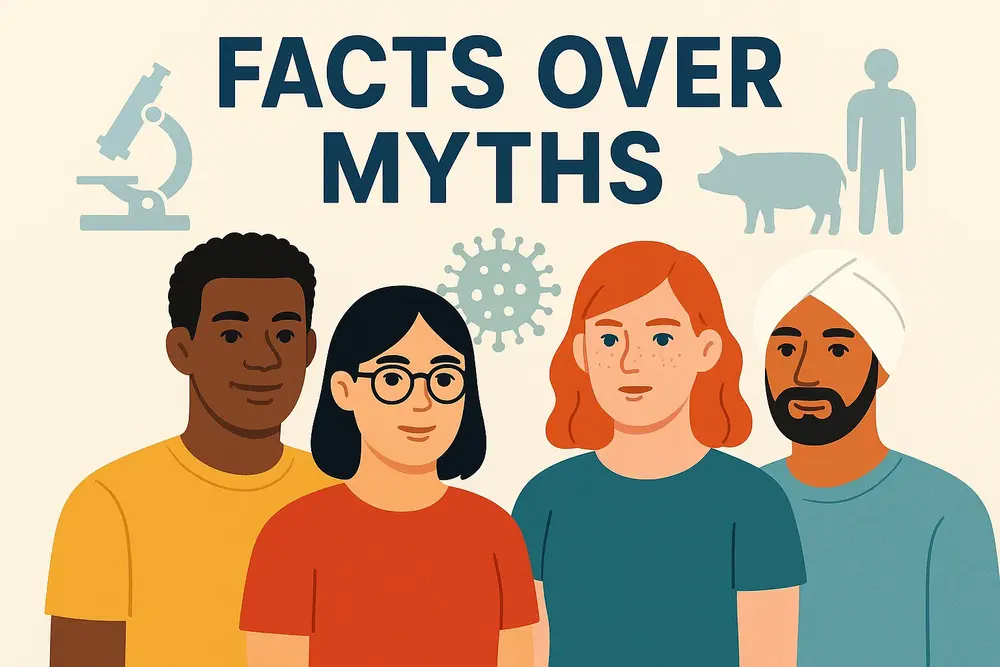When someone searches for "did STDs come from animals," their curiosity likely stems from multiple motivations:
Understanding the origins of sexually transmitted diseases (STDs)
Exploring zoonotic disease transmission
Disentangling fact from myth and stigma
Learning the scientific basis behind popular claims
Investigating links between human and animal diseases
This article provides a comprehensive, science-backed exploration of how some STDs may have originated, what role (if any) animals played, and what the research says about the transmission of these diseases through evolutionary history.

Sexually transmitted diseases (STDs) are infections primarily passed from person to person through sexual contact, including vaginal, anal, and oral sex.
Some of the most prevalent STDs include:
HIV/AIDS
Herpes (HSV)
Syphilis
Gonorrhea
Chlamydia
Human papillomavirus (HPV)
Hepatitis B
Zoonosis refers to infectious diseases that can be transmitted between animals and humans. Examples include rabies, SARS-CoV-2, and avian influenza.
Most common STDs are human-adapted and circulate within human populations. However, some STDs or their ancestors may have had zoonotic origins.
HIV (Human Immunodeficiency Virus) originated from simian immunodeficiency virus (SIV), found in chimpanzees and sooty mangabeys. Cross-species transmission likely occurred through hunting and butchering, not sexual contact.
HIV-1 (group M), the pandemic strain, jumped to humans in the early 20th century in Central Africa.
HSV-1 (oral herpes): Believed to have diverged from a virus found in primates millions of years ago.
HSV-2 (genital herpes): May have originated from an ancestor shared with chimpanzee herpesvirus around 1.6 million years ago. Transmission was likely through early hominin interspecies interactions—not necessarily sexual.
Syphilis is caused by Treponema pallidum. While some scholars argue it originated in the New World (America) and was brought to Europe after Columbus, others suggest it evolved from non-venereal treponemal diseases like yaws, which affect primates and humans.
There’s limited evidence for an animal-to-human jump, but it’s not entirely ruled out.

These bacterial STDs have no known animal reservoirs. They co-evolved with human hosts and are passed only through human-to-human contact.
There are myths suggesting STDs spread to humans via bestiality. However, these claims are not scientifically supported. Most zoonotic transfers involve blood exposure, bites, or respiratory droplets—not sexual contact.
Cultural fears and stigmas have often driven false narratives about disease origins. STDs have long been linked with moral judgment, making them fertile ground for misinformation.
Animals like mice, monkeys, and rabbits are used to study STD mechanisms, vaccine development, and transmission patterns.
Animal testing for STDs raises ethical concerns but has also contributed significantly to life-saving treatments like antiretrovirals for HIV.
Over time, pathogens adapt to their host environments. Many STDs are now highly specialized to infect humans.

Some viruses and bacteria evolve alongside their human hosts, developing new strategies to evade the immune system or increase transmission.
Yes, animals have their own sexually transmitted infections:
Koalas: Chlamydia pecorum, causing infertility
Rabbits: Treponema cuniculi (similar to syphilis)
Primates: Simian Immunodeficiency Virus (SIV)
However, most of these pathogens are species-specific and do not jump easily to humans.
Close contact with animals through hunting or domestication has been a more likely route for zoonotic diseases than sexual contact.
Increased global connectivity accelerates the spread of human-specific STDs but has minimal impact on zoonotic transmission in this category.
Understanding the origins and evolution of STDs aids in disease surveillance and vaccine development.
The One Health concept recognizes the interconnectedness of human, animal, and environmental health. It supports multidisciplinary research into zoonoses and human-animal interactions.
While a few STDs like HIV and HSV have animal origins, most sexually transmitted diseases are uniquely human and adapted to human-to-human transmission. Zoonotic spillovers occur through blood contact, bites, or environmental exposure—not through bestiality as popular myths suggest. Understanding the origins of STDs helps reduce stigma, enhances scientific literacy, and promotes evidence-based public health decisions.
The next time someone asks, “Did STDs come from animals?” the answer is nuanced, fascinating, and deeply rooted in evolutionary biology—not folklore.
animal tags: STDs
We created this article in conjunction with AI technology, then made sure it was fact-checked and edited by a Animals Top editor.